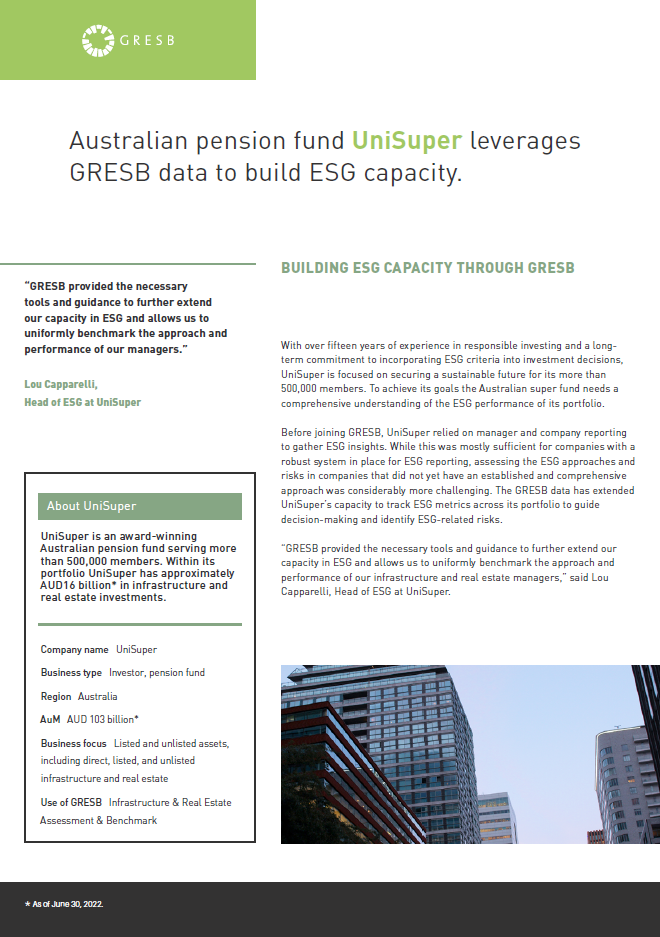Australian pension fund UniSuper leverages GRESB data to build ESG capacity

UniSuper is an award-winning Australian pension fund serving more than 500,000 members. Within its portfolio UniSuper has approximately AUD 16 billion in infrastructure and real estate investments.
Business type: Investor, pension fund
Region: Australia
AuM: AUD 103 billion
Business focus: Listed and unlisted assets, including direct, listed, and unlisted infrastructure and real estate
Use of GRESB: Infrastructure & Real Estate Assessment & Benchmark
Building ESG capacity through GRESB
With over fifteen years of experience in responsible investing and a long-term commitment to incorporating ESG criteria into investment decisions, UniSuper is focused on securing a sustainable future for its more than 500,000 members. To achieve its goals the Australian super fund needs a comprehensive understanding of the ESG performance of its portfolio.
Before joining GRESB, UniSuper relied on manager and company reporting to gather ESG insights. While this was mostly sufficient for companies with a robust system in place for ESG reporting, assessing the ESG approaches and risks in companies that did not yet have an established and comprehensive approach was considerably more challenging. The GRESB data has extended UniSuper’s capacity to track ESG metrics across its portfolio to guide decision-making and identify ESG-related risks.
“GRESB provided the necessary tools and guidance to further extend our capacity in ESG and allows us to uniformly benchmark the approach and performance of our infrastructure and real estate managers,” said Lou Capparelli, Head of ESG at UniSuper.
Identifying risk
As a significant investor in infrastructure and real estate, UniSuper is keenly aware of the importance of proactively monitoring and managing risks in its portfolios. The super fund uses GRESB data to understand the risks to different sectors in different geographical locations and to help with the assessment of physical risks in some of its infrastructure and real estate assets.
“We start with governance to understand how various risks – whether transition, physical, social, or other – are managed and monitored through the organization. We then work with each company to learn what risks and opportunities are material and how they are being managed,” said Capparelli.
UniSuper’s approach to managing and mitigating risk varies based on the specific type of risk, with considerations ranging from decarbonization management to asset resilience. Examples of focus areas include:
- Transition risk: How are portfolio companies decarbonizing their energy sources and taking advantage of the reduced costs associated with energy efficiency?
- Physical risk: How is the asset making itself more resilient to more severe weather?
- Social risk: How are employee-based risks, such as OH&S risks, managed?
“With ESG risks being industry specific, having data and a benchmark tailored to real assets allows for direct comparisons and provides actionable insights,” concluded Capparelli.